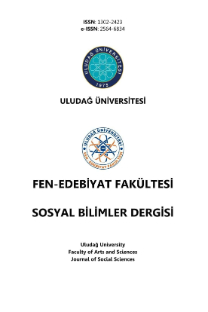"Varmak" ile Kurulu İki Eylemli Yüklemlerin Durumu
The Position of Predicates Composed of Two Verbs Depending Upon "Varmak"
___
- ISSN: 1302-2423
- Yayın Aralığı: 2
- Başlangıç: 1999
- Yayıncı: Bursa Uludağ Üniversitesi
Günümüzün Kimlik Sorunu ve Bu Sorunun Yaşandığı Temel Çatışma Eksenleri
Kişisel Mükemmelliği Yakalamada Nöro Linguistik Programa (NLP) Tekniği
"Varmak" ile Kurulu İki Eylemli Yüklemlerin Durumu
Kâmî Mehmed Efendi ve Fîrûznâme
Türkiye Türkçesinde -Ip Ulaçlı Fiillerin Durumuna Bir Bakış
Osmanlı Dönemi Bilirkişilik Uygulamaları Üzerine Bir Araştırma
Türkiye'nin Batılaşma Serüveninde Özgün Bir Portre: Ahmet Hamdi Tanpınar
Türkiye'nin Batılaşma Serüveninde Özgün Bir Portre: Ahmet Hamdi Tanpınar
Kitle İletişim Araçları, Siyaset ve Propaganda
